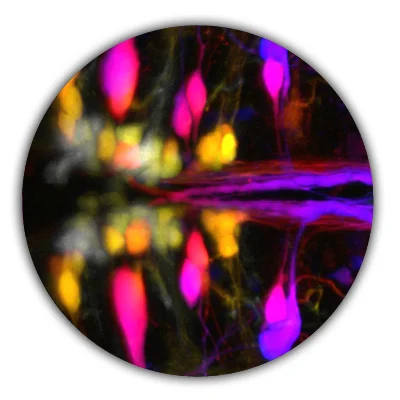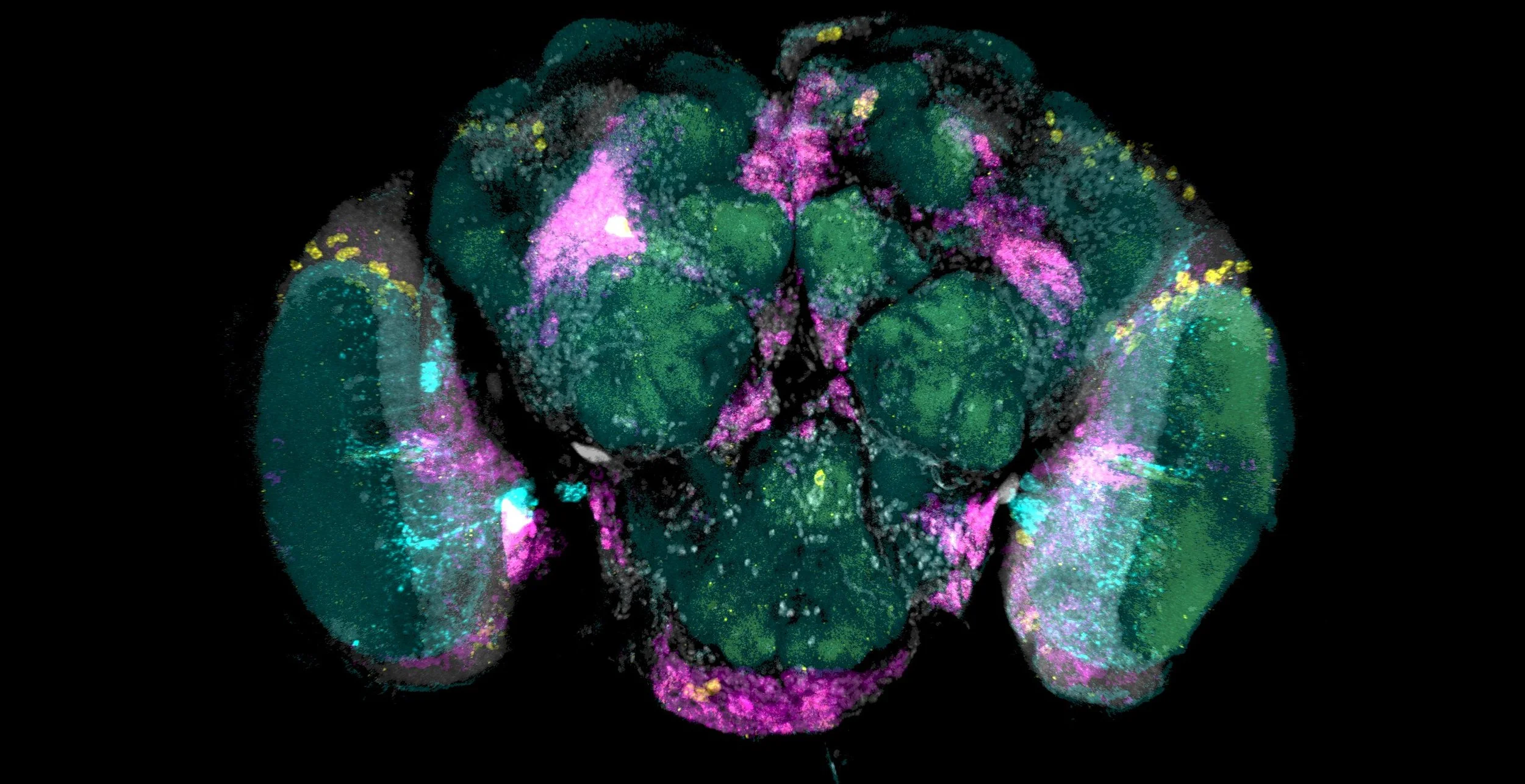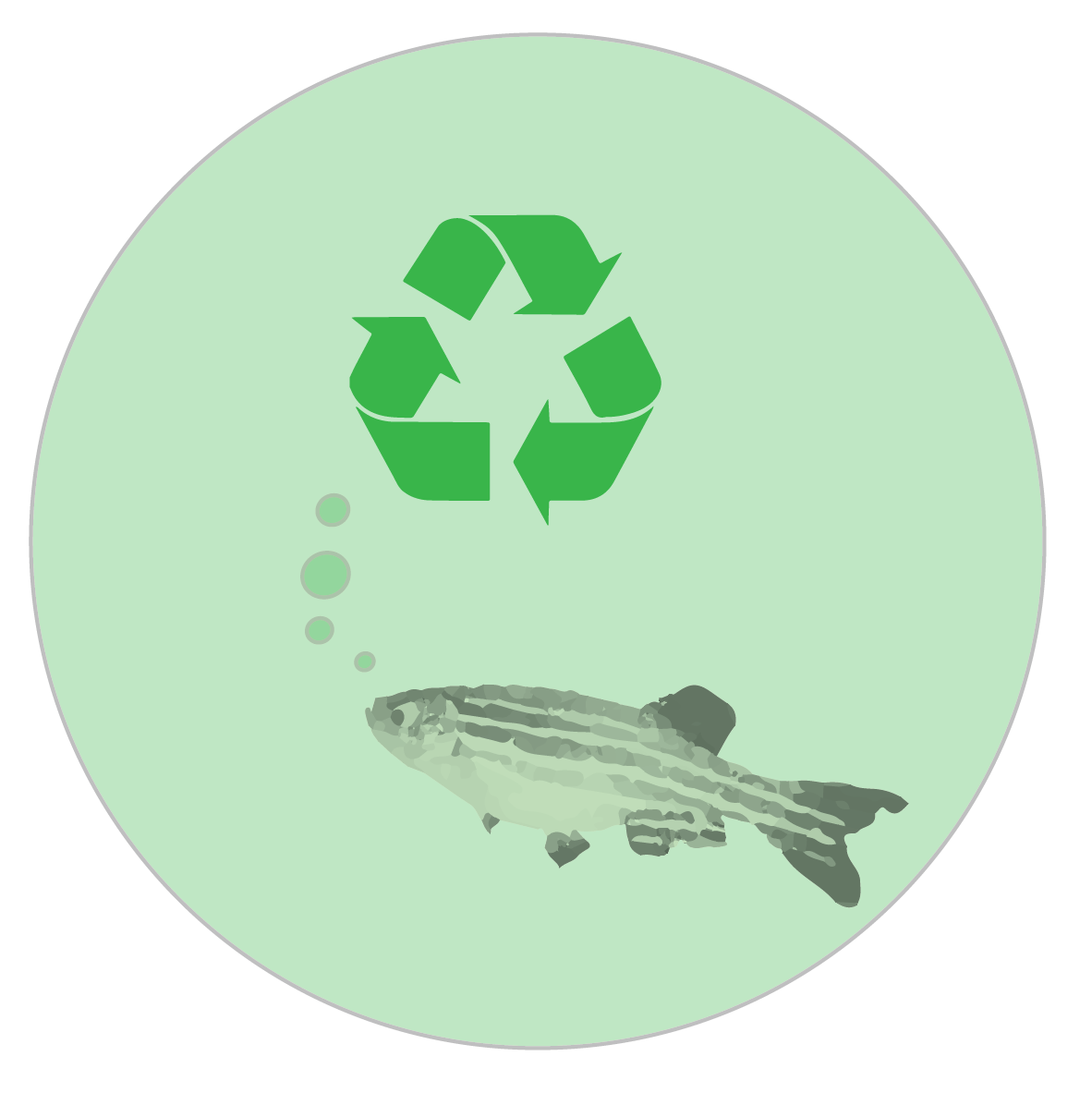







Zebrafish UCL
Zebrafish UCL
About zebrafish research at ucl
The zebrafish is a small tropical fish that has become one of the favoured animal model systems for research in many areas including embryonic development, genetic analyses of disease, neural circuit function and behaviour. One reason for this popularity is that zebrafish embryos are optically transparent and genetically tractable making them ideally suited for studies of cell and tissue behaviour and function. Zebrafish also exhibit sleep, social, hunting and other complex behaviours and progress in understanding the neuroanatomy of the brain is facilitating studies of the neural circuits mediating these behaviours.
On this site, you can learn about the wide range of research projects at UCL that use zebrafish and see many beautiful images and movies from our projects. We are passionate about encouraging the next generation of scientists and engage in a lot of outreach workshops and activites. We are also dedicated to increasing the sustainability of our research. You can get plenty of tips on how to reduce plastic waste and energy use in the lab here.
Research groups
Click on a lab button to read more about their research.
Latest NEWS

Outreach
Outreach
Outreach
Applications for the Zebrafish Academy 2026 are now CLOSED.
We are reviewing all applications and will be in touch soon.
In the fish labs we love doing experiments, but we also love sharing our enthusiasm for science and for zebrafish with others. That is why we take our outreach activities very seriously.
We are committed to promoting science, critical thinking and education of young people via our Outreach Activities. Our aim is to reach students from all backgrounds, help them to engage with STEM and to gain an insight into the opportunities available in higher education and STEM research.
Our main outreach program is called the Zebrafish Academy. This week long placement is aimed at A’level students who are in Lower 6th (Yr 12) at the time of the placement. Please go to the ZFA page via the link below for all the information you need to apply for this program.
We also offer a range of visits and can provide ‘in classroom’ workshops, as well as school visitis ‘on-campus’ at UCL. Please choose an option below to explore our outreach programs. Please note that only teachers may request school visits from zebrafish researchers(LAB2SCHOOL) and visits to the zebrafish lab for school students(SCHOOL2LAB).
NB: As we are a research lab, we can only offer the outreach activities mentioned above to a limited number of students and school groups. We hope, that we can expand our programme in the future to offer these opportunities to more and more students!
outreach blog
Read about what the Zebrafish Lab have been doing to spread our love of science.

ZF Green Lab
ZF Green Lab
ZebrafishUCL are focussing on 3 key areas to make our research more sustainable. Please follow the links below to read more about how we are reducing single-use plastics, energy consumption and other cultural changes to improve sustainability in our lab.
ZF GreenLab is commited to enhancing sustainability in our own laboratory and workspaces. We have loads of tips on how you can do the same. You will save money and resources while helping the environment.
Read our blog on the Node and download our IZFS poster for even more tips!

Resources
Resources
resources

Images
Images
Images
Many of our images are available for download from Wellcome Images.
Simply search the collection for 'Zebrafish'. All images and movies are copyright of UCL Zebrafish Group please request permission before using.

Publications
Publications
Publications
For a full list of Zebrafish UCL publications by year click here. You can also visit our publication summaries page to find summaries of papers that need less scientific knowledge to understand.
Recent publications
Lau JYN, Fitzgerald JE and Bianco IH.
Supraspinal commands have a modular organization that is behavioral context specific.
Current Biology (2025).DOI: 10.1016/j.cub.2025.07.066
Monfries C. Carter, C, Ataliotis P, Bseisu A, Shaikh M, Hernández-Bejarano M, Fourteia M, Maftei MI, Young RM, Wilson SW, Gestri G and Cavodeassi F.
fzd5 zebrafish mutants behave as a sensitised genetic background prone to develop microphthalmia and coloboma.
Dis Model Mech.2025. 18 (6): dmm052284. doi.org/10.1242/dmm.052284.
Lees, R.M., Bianco, I.H., Campbell, R.A.A. et al.
Standardized measurements for monitoring and comparing multiphoton microscope systems.
Nat Protoc (2025). https://doi.org/10.1038/s41596-024-01120-w
Dowell, C.K, Hawkins, T, and Bianco, I.H.
Subsets of extraocular motoneurons produce kinematically distinct saccades during hunting and exploration
Curr. Biol. 2025; 35:554-573.e6 DOI: 10.1016/j.cub.2024.12.010
Asaph Zylbertal, Isaac H. Bianco
Mirror-assisted light-sheet microscopy: a simple upgrade to enable bi-directional sample excitation.
Neurophotonics, Vol. 11, Issue 3, 035006 (August 2024). https://doi.org/10.1117/1.NPh.11.3.035006
Powell GT, Faro A, Zhao Y, Stickney H, Novellasdemunt L, Henriques P, Gestri G, Redhouse White E, Ren J, Lu W, Young RM, Hawkins TA, Cavodeassi F, Schwarz Q, Dreosti E, Raible DW, Li VSW, Wright GJ, Jones EY, Wilson SW.
Cachd1 interacts with Wnt receptors and regulates neuronal asymmetry in the zebrafish brain.
Science 384, 573-579 (2024). DOI:10.1126/science.ade6970
Suppermpool, A., Lyons, D.G., Broom, E, and Rihel J.
Sleep pressure modulates single-neuron synapse number in zebrafish.
Nature (2024). https://doi.org/10.1038/s41586-024-07367-3
Kroll F, Donnelly J, Özcan GG, Mackay E, Rihel J
Behavioural pharmacology predicts disrupted signalling pathways and candidate therapeutics from zebrafish mutants of Alzheimer’s disease risk genes
eLife13:RP96839 2024
https://doi.org/10.7554/eLife.96839.1
Özcan GG, Lim S, Canning T, Tirathdas L, Donnelly J, Kundu T, Rihel J.
Genetic and chemical disruption of amyloid precursor protein processing impairs zebrafish sleep maintenance.
iScience. 2024 Jan 11;27(2):108870. doi: 10.1016/j.isci.2024.108870.
Alba-González, A.; Dragomir, E.I.; Haghdousti, G.; Yáñez, J.; Dadswell, C.; González-Méndez, R.; Wilson, S.W.; Tuschl, K.; Folgueira, M.
Manganese Overexposure Alters Neurogranin Expression and Causes Behavioral Deficits in Larval Zebrafish.
Int. J. Mol. Sci. 2024, 25, 4933. https://doi.org/10.3390/ijms25094933
Gurung S, Karamched S, Perocheau D, Seunarine KK, Baldwin T, Alrashidi H, Touramanidou L, Duff C, Elkhateeb N, Stepien KM, Sharma R, Morris A, Hartley T, Crowther L, Grunewald S, Cleary M, Mundy H, Chakrapani A, Batzios S, Davison J, Footitt E, Tuschl K, Lachmann R, Murphy E, Santra S, Uudelepp ML, Yeo M, Finn PF, Cavedon A, Siddiqui S, Rice L, Martini PGV, Frassetto A, Heales S, Mills PB, Gissen P, Clayden JD, Clark CA, Eaton S, Kalber TL, Baruteau J.
The incidence of movement disorder increases with age and contrasts with subtle and limited neuroimaging abnormalities in argininosuccinic aciduria.
J Inherit Metab Dis. 2023. doi: 10.1002/jimd.12691.
Barlow IL, Mackay E, Wheater E, Goel A, Lim S, Zimmerman S, Woods I, Prober DA, Rihel J.
The zebrafish mutant dreammist implicates sodium homeostasis in sleep regulation.
Elife. 2023 Aug 7;12:RP87521. doi: 10.7554/eLife.87521.
Benoit E, Lyons DG, and Rihel J
Noradrenergic Tone is Not Required for Neuronal Activity-Induced Rebound Sleep in Zebrafish.
J Comp Physiol B. 2023 Jul 22. doi: 10.1007/s00360-023-01504-6.
Ali, M.A., Lischka, K., Preuss, S.J., Trivedi, C.A., Bollmann, J.H. (2023)
A synaptic corollary discharge signal suppresses midbrain visual processing during saccade-like locomotion.
Nature communications. 14:75927592.
Chong-Morrison V, Mayes S, Simões FC, Senanayake U, Carroll DS, Riley PR, Wilson SW, Sauka-Spengler T.
Ac/Ds transposition for CRISPR/dCas9-SID4x epigenome modulation in zebrafish.
Biol Open. 12(6):bio059995. doi: 10.1242/bio.059995.
Zylbertal A & Bianco IH (2023)
Recurrent network interactions explain tectal response variability and experience-dependent behavior
eLife 12:e78381. https://doi.org/10.7554/eLife.78381
Tornini VA, Miao L, Lee HJ, Gerson T, Dube SE, Schmidt V, Kroll F, Tang Y, Du K, Kuchroo M, Vejnar CE, Bazzini AA, Krishnaswamy S, Rihel J, Giraldez AJ.
linc-mipep and linc-wrb encode micropeptides that regulate chromatin accessibility in vertebrate-specific neural cells.
Elife. 2023 May 16;12:e82249. doi: 10.7554/eLife.82249.
Weinschutz Mendes H, Neelakantan U, Liu Y, Fitzpatrick SE, Chen T, Wu W, Pruitt A, Jin DS, Jamadagni P, Carlson M, Lacadie CM, Enriquez KD, Li N, Zhao D, Ijaz S, Sakai C, Szi C, Rooney B, Ghosh M, Nwabudike I, Gorodezky A, Chowdhury S, Zaheer M, McLaughlin S, Fernandez JM, Wu J, Eilbott JA, Vander Wyk B, Rihel J, Papademetris X, Wang Z, Hoffman EJ.
High-throughput functional analysis of autism genes in zebrafish identifies convergence in dopaminergic and neuroimmune pathways.
Cell Rep. 2023 Mar 28;42(3):112243. doi: 10.1016/j.celrep.2023.112243. Epub 2023 Mar 17.
María Hernández-Bejarano, Gaia Gestri, Clinton Monfries, Lisa Tucker, Elena I. Dragomir, Isaac H. Bianco, Paola Bovolenta, Stephen W. Wilson, Florencia Cavodeassi (2022)
Foxd1-dependent induction of a temporal retinal character is required for visual function.
Development 149 (24) doi: https://doi.org/10.1242/dev.200938
Jason J Otterstrom, Alexandra Lubin, Elspeth M Payne, Yael Paran (2022)
Technologies bringing young Zebrafish from a niche field to the limelight.
SLAS Technol. 2022 Apr;27(2):109-120. doi: 10.1016/j.slast.2021.12.005
Tuschl K, White RJ, Trivedi C, Valdivia LE, Niklaus S, Bianco IH, Dadswell C, González-Méndez R, Sealy IM, Neuhauss SCF, Houart C, Rihel J, Wilson SW, Busch-Nentwich EM.(2022)
Loss of slc39a14 causes simultaneous manganese hypersensitivity and deficiency in zebrafish.
Dis Model Mech. 15(6).doi: 10.1242/dmm.044594.
Turner KJ, Hawkins TA, Henriques PM, Valdivia LE, Bianco IH, Wilson SW and Folgueira M (2022)
A Structural Atlas of the Developing Zebrafish Telencephalon Based on Spatially-Restricted Transgene Expression.
Front. Neuroanat. 16:840924. doi: 10.3389/fnana.2022.840924

Contact
Contact
Contact Us
Tube The nearest underground stations are Euston Square, Euston and Warren Street. We are only a few blocks away from any of these stations.
Buses Southbound routes 10, 24, 29, and 73 pass by UCL’s main gate; northbound routes stop at Warren Street station.
1st Floor, Anatomy Building
UCL
Gower Street
WC1E 6BT
tel: 020 3549 5652
General & technical enquiries
email: g.powell@ucl.ac.uk
Gareth Powell
Outreach/ Work experience/Academic Enquiries
email: g.powell@ucl.ac.uk
Gareth Powell
For information specific to a research group...
Alexandre Lab p.alexandre@ucl.ac.uk
Bianco Lab i.bianco@ucl.ac.uk
Dreosti Lab e.dreosti@ucl.ac.uk
Frankel Lab p.frankel@ucl.ac.uk
Hawkins Lab thomas.hawkins@ucl.ac.uk
MacDonald Lab ryan.macdonald@ucl.ac.uk
Mongera Lab a.mongera@ucl.ac.uk
Payne Lab e.payne@ucl.ac.uk
Rihel Lab j.rihel@ucl.ac.uk
Tada Lab m.tada@ucl.ac.uk
Tuschl Lab k.tuschl@ucl.ac.uk
Wilson-Gestri Lab s.wilson@ucl.ac.uk or g.gestri@ucl.ac.uk
Wong Lab mie.wong@ucl.ac.uk
Young Lab rodrigo.young@ucl.ac.uk



































































